Getting into the Doughnut with GALLANT
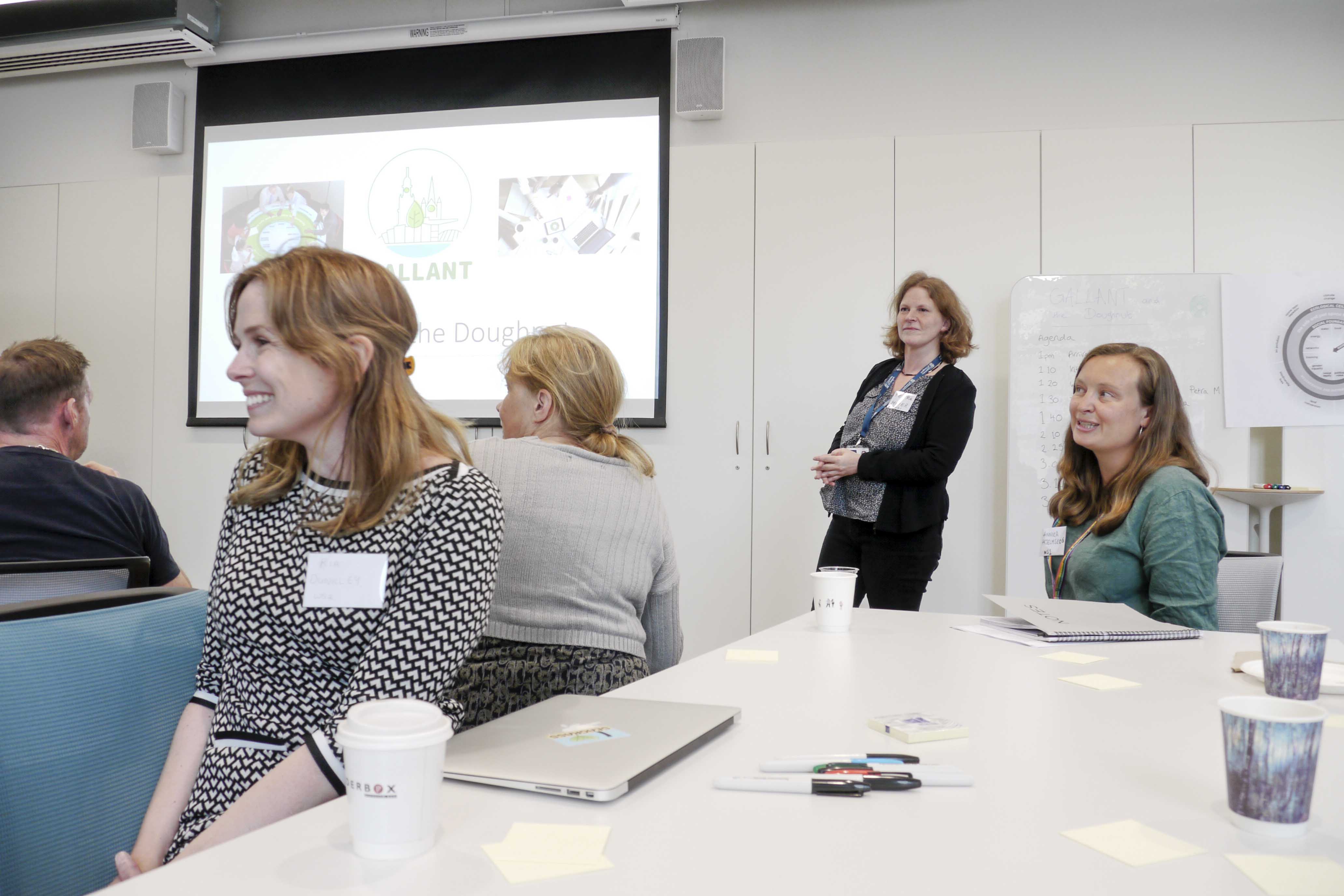
GALLANT working with Glasgow to explore ways of reaching the ‘safe and just space for humanity’
Team members from across the GALLANT Programme joined our City Portrait researchers in August to explore the links between their work packages and the different dimensions of the Doughnut.
Part of the GALLANT’s ‘Glasgow as a Living Lab’ ambition is to transform the City of Glasgow into a thriving place for all people within the means of the living planet. System transformation is a complex and challenging goal, so we used the ‘unrolled doughnut’ (see below) to start identifying and mapping some of the interconnections between the goals of GALLANT’s Work Packages, and the components of the Doughnut framework. We found many possibilities for the different GALLANT initiatives to impact on either, or both, of the Social Foundation and the Ecological Ceiling. To thrive, we need to meet the needs of all people, as expressed in the Social Foundation, within the means of the living planet, shown by the limits of the Ecological Ceiling.
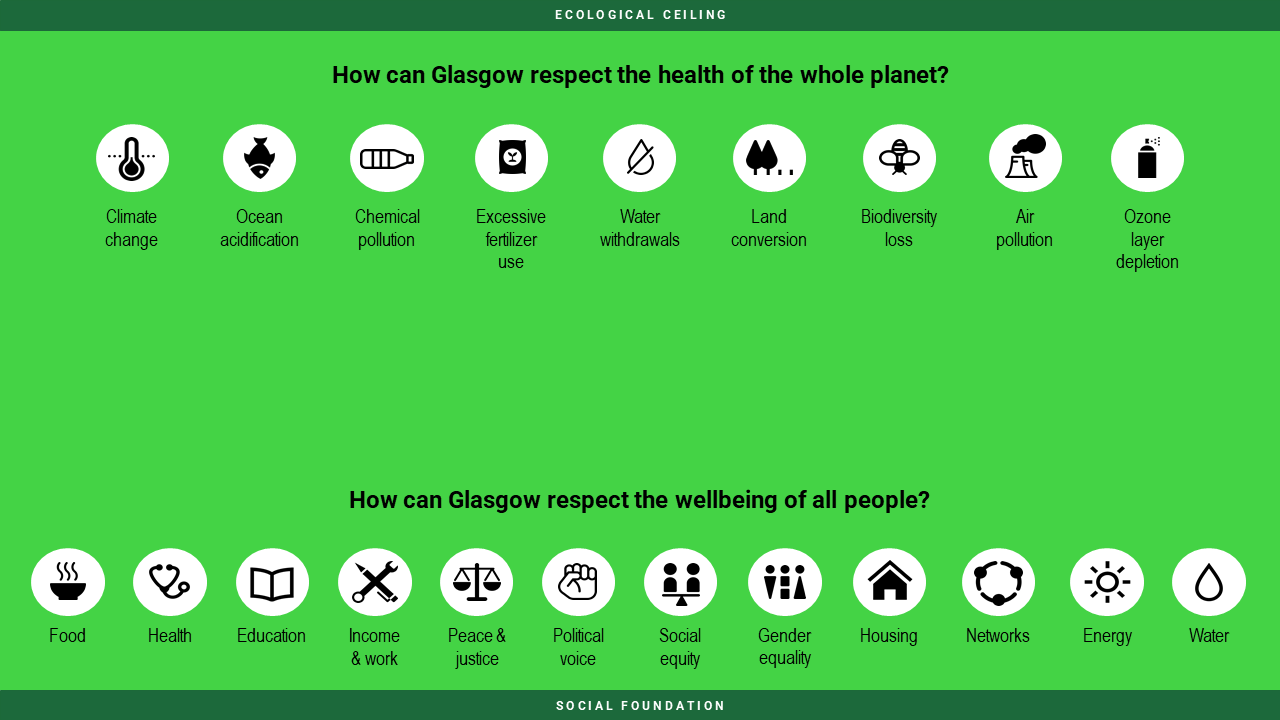
For more information on unrolling the Doughnut, see DEAL’s resources (Doughnut Economic Action Lab) here: Doughnut Unrolled: Dimensions of the four lenses | DEAL (doughnuteconomics.org)
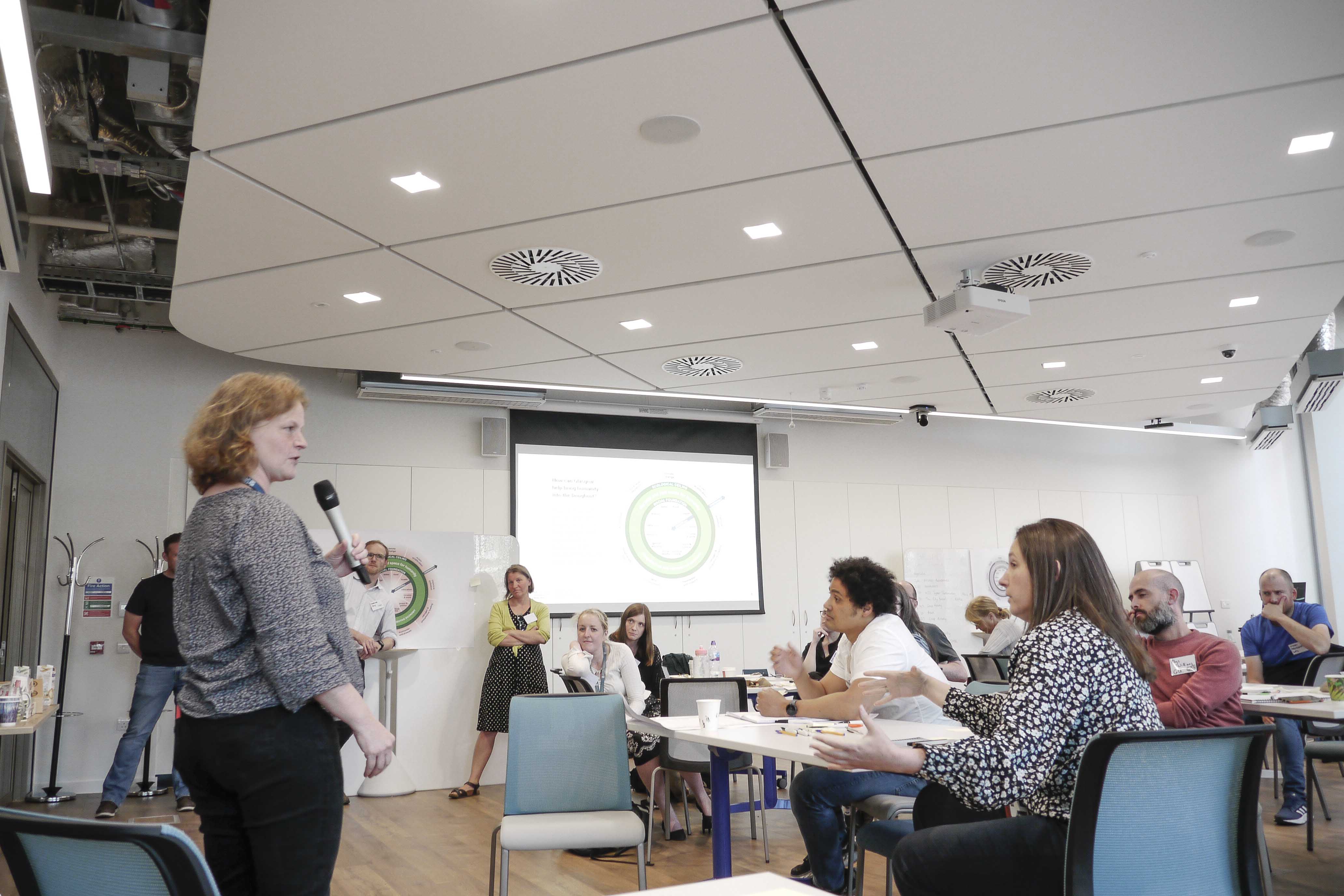
The discussion was fascinating! Our large team of cross-disciplinary researchers brought many different perspectives and challenges to the room, and we started to identify places where the work packages will connect. For the system to transform, these different activities will need to work together, to amplify and reinforce our complementary goals. Systems mapping helps us find the places we might need to intervene in the system to either maximise the co-benefits of these different activities, or minimise the impacts of any unintended negative consequences.
Each work package was able to identify links with several parts of the framework. For example:
Work Package 1 is looking at addressing flood risk. This work package made the link between the adaptive, democratic, and flexible decision-making processes they plan to develop, and the Political Voice, Social Equity, and Peace & Justice elements of the Social Foundation.
Work Package 2 has the goal of halting & reversing biodiversity loss (which is one of the Planetary Boundaries of the Ecological Ceiling). We considered the possibilities of creating better ‘ecosystem health services’ for both humans and animals, making a link to the Social Foundation via Health.
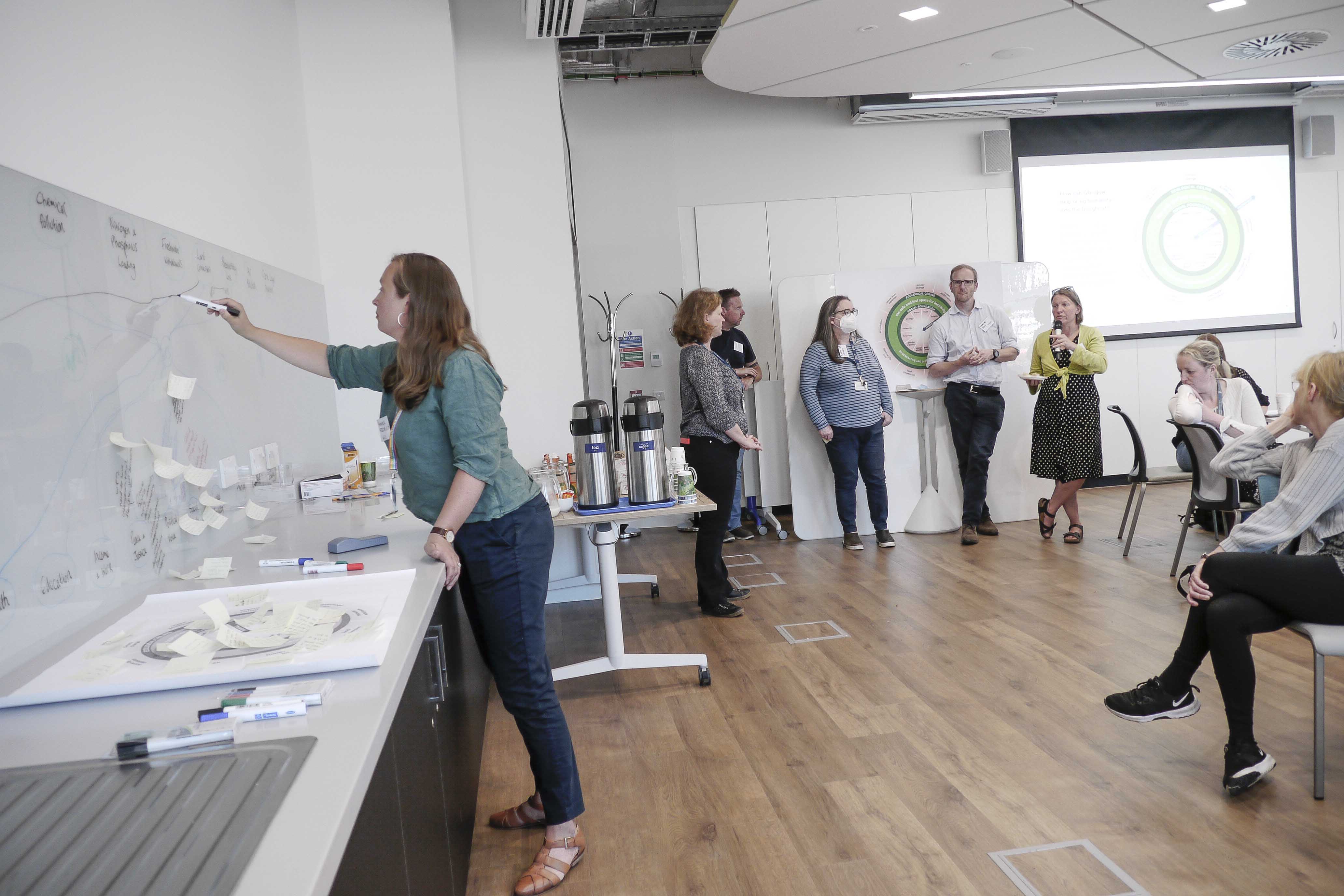
Work Package 3 is regenerating vacant and derelict land (VDL) through carbon sequestration. The possibility was raised of restoring natural habitats on polluted sites to encourage new species or bring back lost ones. This relates to the Biodiversity Loss component of the Ecological Ceiling and could also reinforce or amplify the ambitions of Work Package 2.
Work Package 4 will enhance active travel and inclusive mobility. The group considered how opening more flexible and safer routes for active travel, including the option to combine different modes of transport, could boost the Social Foundation goals of better Networks, Gender Equality and Health, through increased levels of physical activity.
Work Package 5 is trialling sustainable community energy. This may have a direct impact on reducing the Climate Change and Air Pollution elements of the Ecological Ceiling. A possibility was also raised for working closely with Work Packages 3 and 4, to either use remediated VDL sites to house the mechanics and equipment for community energy generation, or to trial ways of capturing the kinetic energy created by more active travel (walking or wheeling) to generate local power.
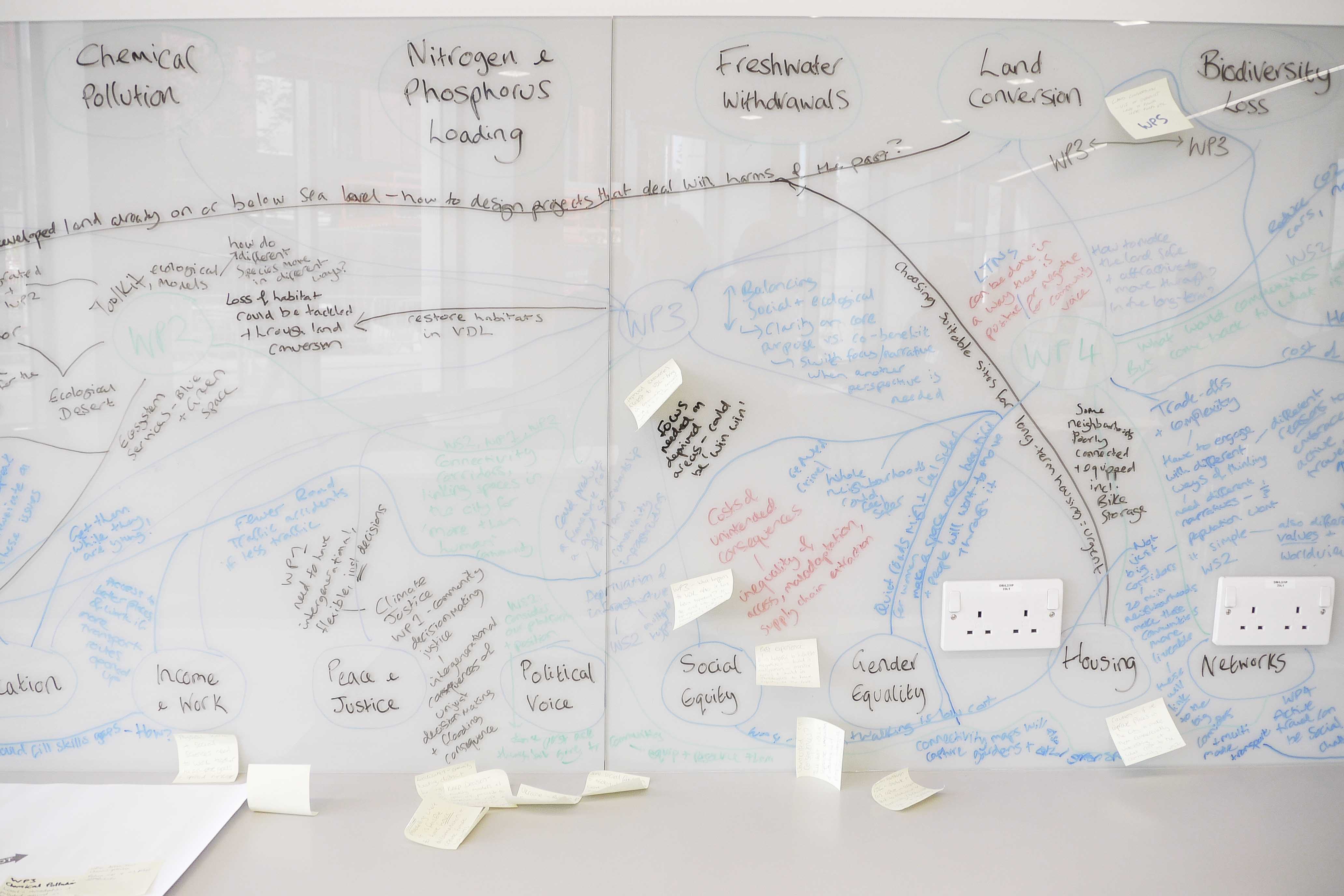
And throughout our discussions, the embedded workstreams of Community Collaboration and Data Analytics asked thoughtful questions about both how we might achieve these goals in ways that encourage the most community participation and benefit, as well as how we will access and record the data we need to understand and demonstrate our progress towards these goals.
The Doughnut Economics framework is embedded throughout the GALLANT programme and our Work Package teams will continue to work together on exploring the system connections this approach highlights. We also hope that sharing insights from our City Portrait workshops as we continue to hold them throughout the autumn will give more insight into how each of these work packages might address the vision of ‘Thriving’ on the City’s own terms. Watch this space!
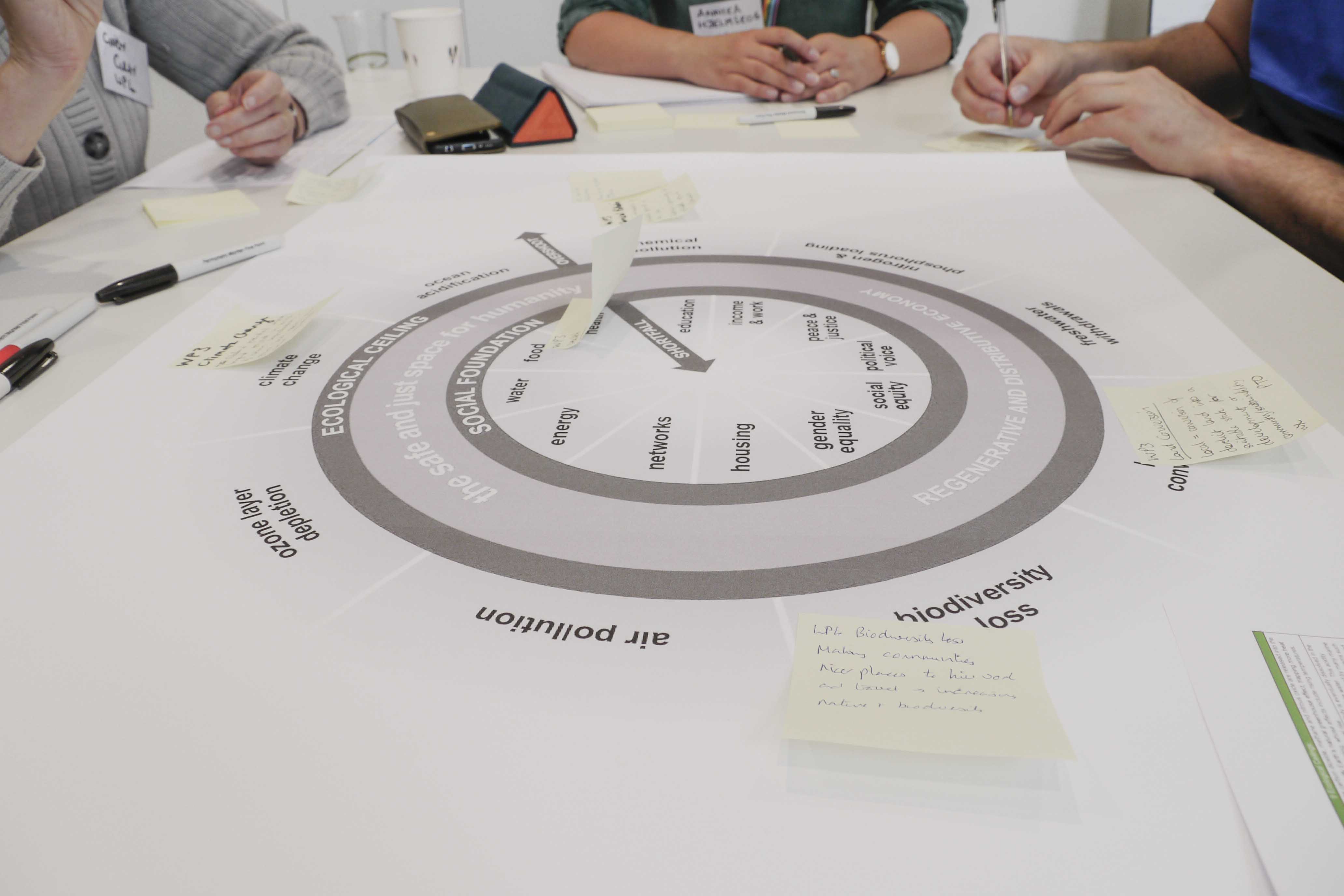
Summary written by Annika Hjelmskog, Research Associate for Glasgow's City Portrait
- Contact Project Research Associate Annika Hjelmskog for more information
- GCP Workshops
- The Thriving Cities Initiative
- More on City Portraits from TCI
- More on Doughnut Economics
- The GALLANT Programme
- Glasgow TCI City Portrait Launch at COP26

